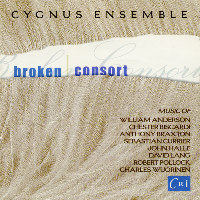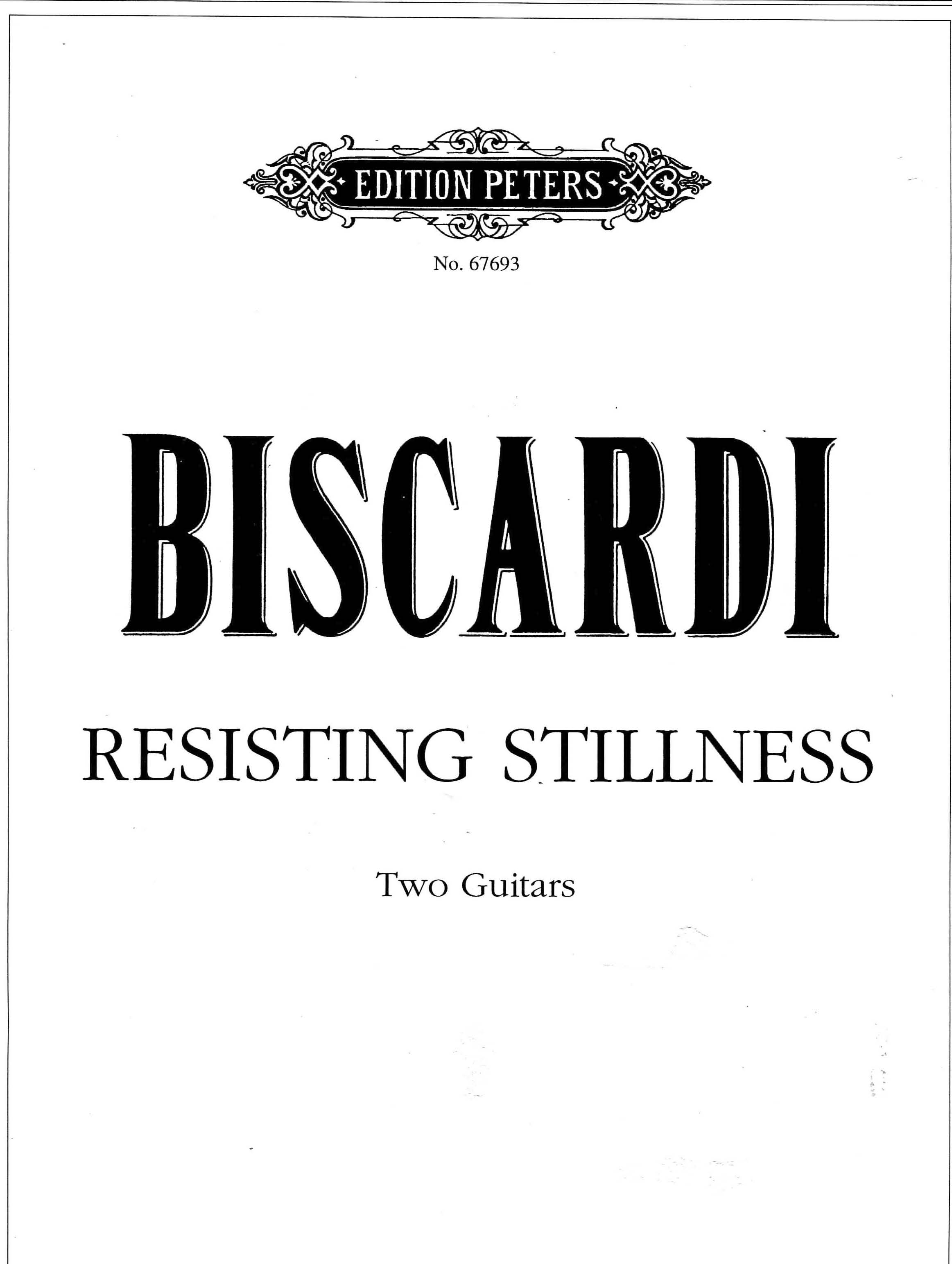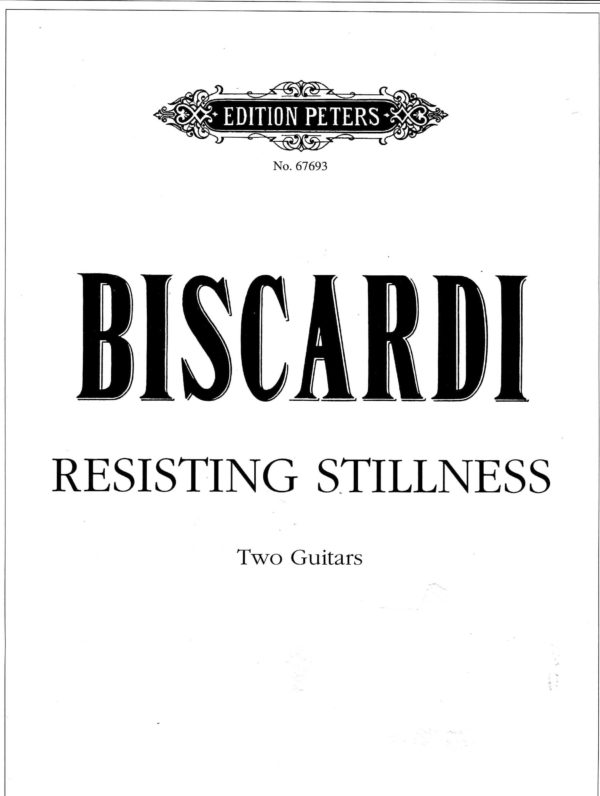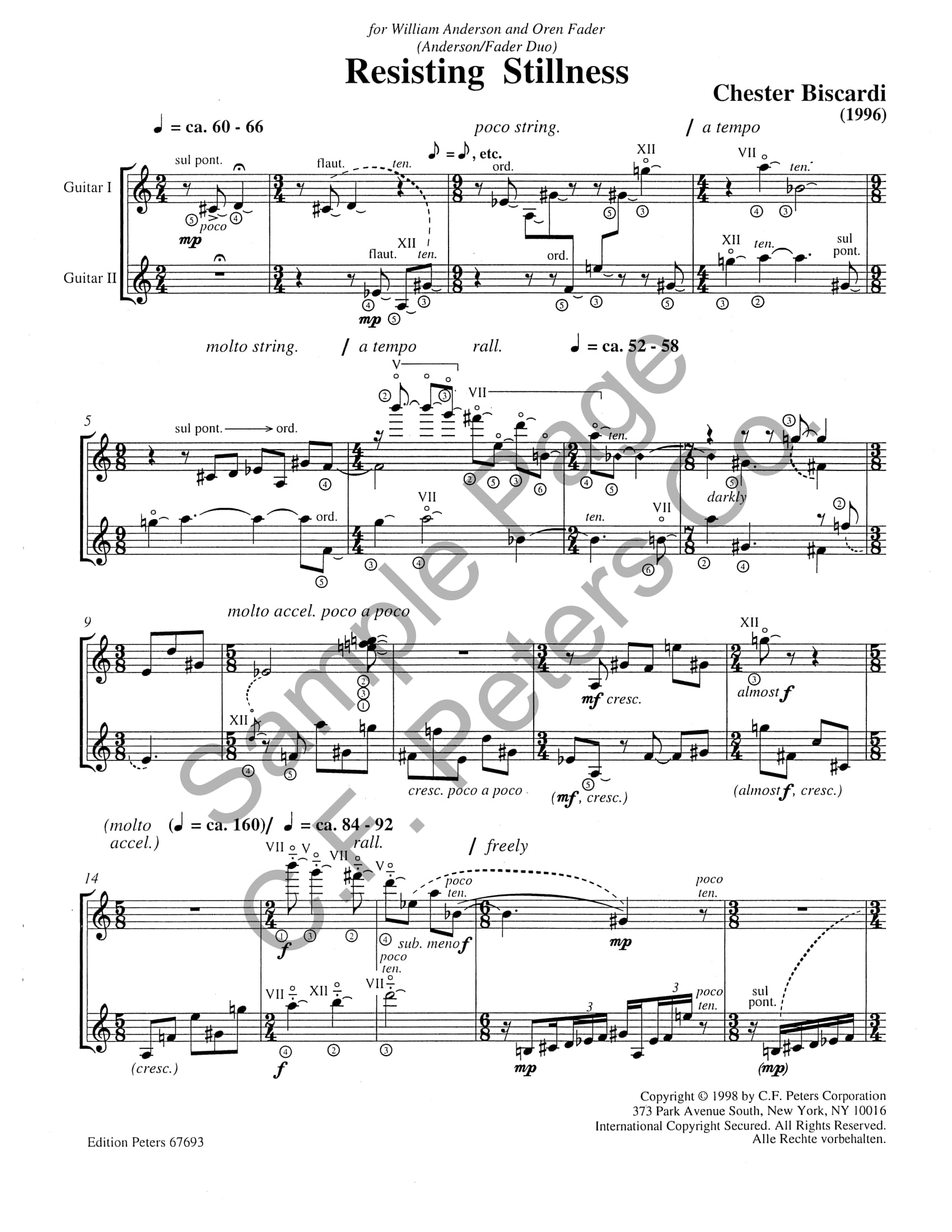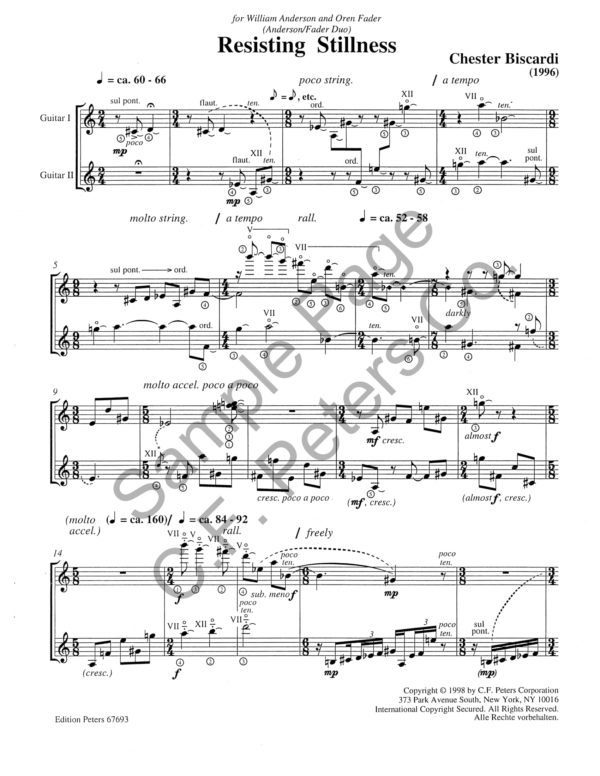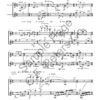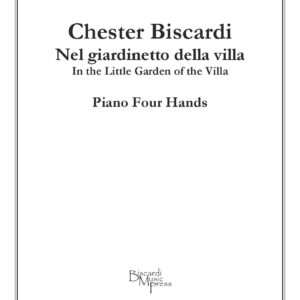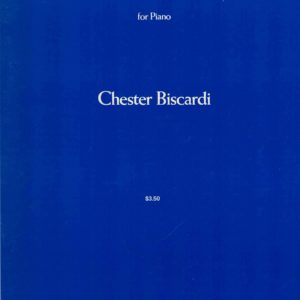Description
Audio
Anderson/Fader Duo
William Anderson and Oren Fader, guitars
This recording appears on
Broken Consort, New World Records/CRI NWCR834 (New York 2000) with Sebastian Currier
Broken Consort, John Halle
Spooks, Charles Wuorinen
Fenton Songs, David Lang
Frag, William Anderson
Ear Conception, Anthony Braxton
Composition No. 186, and Robert Pollock
Cygnature Piece; all performances by Cygnus.
Premiere
Broadcast Premiere: 29 January 1996
William Anderson and Oren Fader, guitars
"Around New York" with Fred Childs: WNYC-FM
New York, NY
Preview: 4 February 1996
Cygnus Ensemble: William Anderson and Oren Fader, guitars
Merkin Concert Hall, Abraham Goodman House
New York, NY
World Premiere: 26 March-1 April 1996
William Anderson and Oren Fader, guitars
Mexican Tour:
Sixth International Guitar Festival of Morelia (Morelia Michoacan), Palacia Federal (Hidalgo y Colón), La Palma (Michoacan), Capilla de La Viga (Zocatecas)
Mexico
Commissioner
Commissioned by the Cygnus Ensemble and the International Guitar Festival of Morelia (Michoacan, Mexico) for William Anderson and Oren Fader (Anderson/Fader Duo).
Publisher
C. F. Peters No. P67693
Program Notes
Note 1
A fundamental lyricism has been a defining characteristic of Chester Biscardi’s (b. 1948) music throughout his career, and Resisting Stillness (1996) is no exception. This is music whose rhythmic sense is extremely fluid and leisurely, which projects meaning above all through the delicate interplay of timbre and pitch. Like much of Biscardi’s work, there is an impressionistic sensitivity to the expressive power of pure sound wedded to bel canto line – the two guitars in fact become like a single dreamy meta-instrument, dropping handfuls of glistening harmonics which dapple the music’s surface like light on water. Musical images evoke memory, time, and the cyclical nature of existence. The title suggests a way of listening to the work and reflects Biscardi’s creative struggle at the time of its writing – a personal “pulling up from silence”. This work was commissioned by the Cygnus Ensemble and the International Guitar Festival of Morelia (Mihoacan, Mexico) for William Anderson and Oren Fader (Anderson/Fader Duo).
Note 2
Since the early 1970’s, I have often chosen literary and visual images, as well as texts, according to their power to generate musical images concerning memory, time, and the cyclical nature of existence, themes which are recurrent in my music. Although no particular musical metaphor dictated the writing of Resisting Stillness, for two guitars (1996), the title does suggest a way of listening to the work and reflects my creative struggle at the time – a personal “pulling up from silence”, as well as my interest in the power of pure sound wedded to lyrical line.
Press
"Biscardi's approach to the two-guitar texture combines elements from Schoenbergian
Klangfarbenmelodie with aspects of Béla Bartók's technique of interlocking chords found in his string quartets to create a pointillist soundscape of continually varying depth. Biscardi achieves this effect by writing simultaneously sounded unison pitches on different frets and strings for both guitars with contrasting timbres of sul ponticello or natural and artificial harmonics sounded against normally played notes. Biscardi further enhances the effect of changing depth by specifying as many sustained, and therefore melded, sonorities as possible."
— Calvin Elliker, Notes (2001)
"Luiz Mantovani and David Leisner at Weill Recital Hall began and ended the evening with duets, starting with Chester Biscardi's richly texture 'Resisting Stillness'".
— Allan Kozinn, The New York Times (2005)
"Chester Biscardi's
Resisting Stillness was written in 1996 for the group's two guitarists, who seem to relish the chance to sound like harpists. This short work is magical and restrained — an island of repose in a busy stream of contemporary music."
— Raymond Tuttle, Fanfare (2000)
"A fundamental lyricism has been a defining characteristic of Chester Biscardi's music throughout his career, and
Resisting Stillness (1996), for the two guitars of Cygnus, is no exception. Unlike the preceding three pieces of the program, this is music whose rhythmic sense is extremely fluid and leisurely, which projects its meaning above all through the delicate interplay of timbre and pitch. Like much of Biscardi's work, there is an impressionistic sensitivity to the expressive power of pure sound, wedded to a bel canto line. The two guitars in fact become like a single dreamy meta-instrument, dropping handfuls of glistening harmonics that dapple the music's surface like light on water. This work was also commissioned by the International Guitar Festival of Morelia (Michoacan, Mexico) for William Anderson and Oren Fader."
— CRI Review (2001)
Chester Biscardi's delicate and beautiful "Resisting Stillness" for two guitars opened the second half of the program [inaugurating the new endowment at the Library of Congress called the Dina Koston and Roger Shapiro Fund for New Music].
— Stephen Brookes, The Washington Post (2012)
Chester Biscardi's work never fails to garner extraordinary critical praise, most recently for Anderson-Fader's performance at the Library of Congress, where the Washington Post cited the "delicate and beautiful Resisting Stillness for two guitars".
— Le Cirque (2013)
Finally, Chester Biscardi's
Resisting Stillness, a beautifully atmospheric piece that seems the ideal way to end this remarkably exploratory, successful disc [Le Cirque].
— Colin Clark, Fanfare Magazine (2014)
Chester Biscardi's
Resisting Stillness blends widely spaced intervals, harmonics, scattered plucked upper register notes, occasional runs, and melting lyricism—albeit in a modern idiom—into an evocative whole.
— Robert Schulslaper, Fanfare Magazine (2014)
